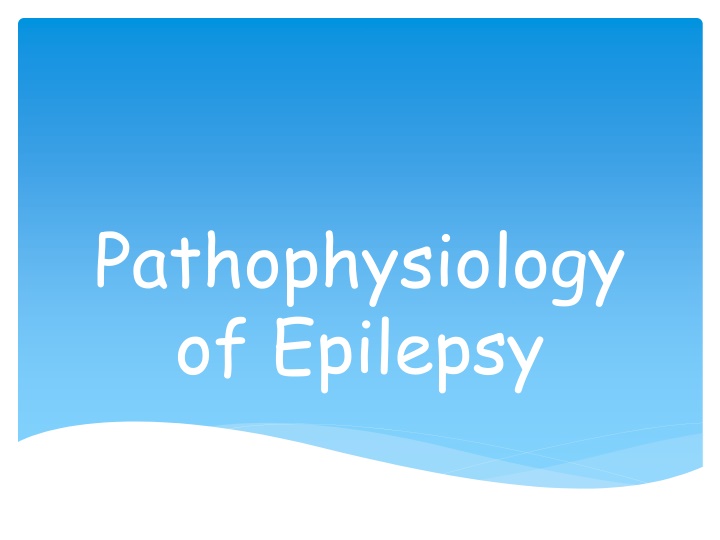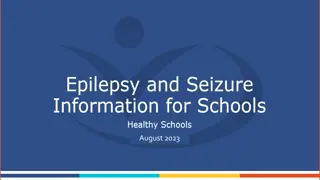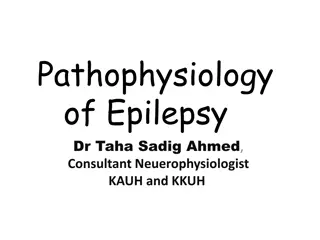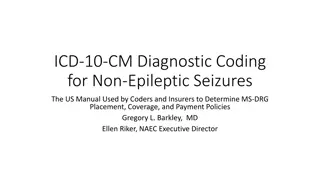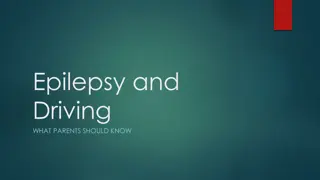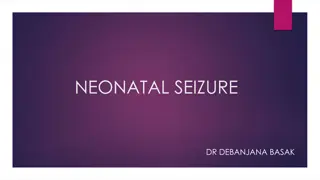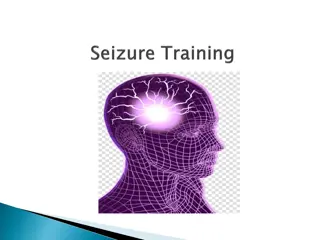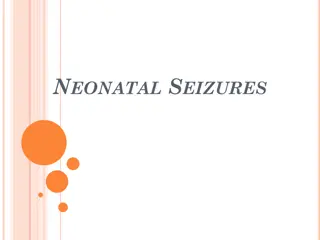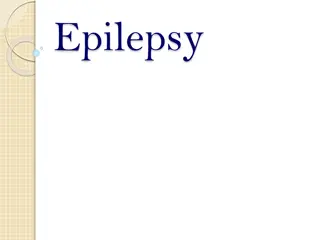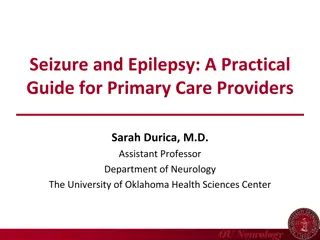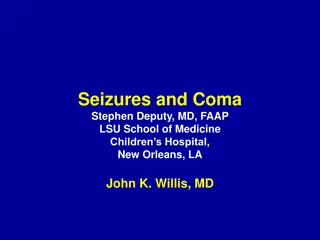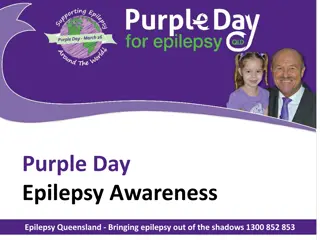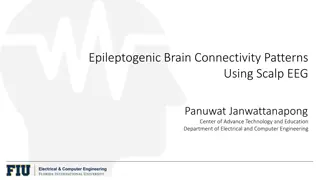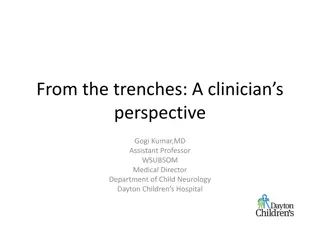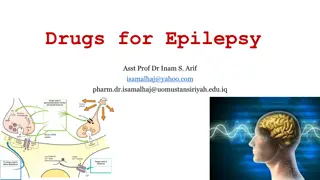Pathophysiology of Epilepsy and Seizures Explained
Seizures are sudden surges in electrical brain activity that can lead to alterations in behavior or consciousness. Epilepsy is a condition characterized by recurrent, unprovoked seizures due to abnormal neuronal discharge. Seizures can be classified as partial or generalized, with various clinical manifestations depending on their origins within the brain. Understanding the distinction between focal and generalized seizures is crucial in diagnosing and managing epilepsy effectively.
Download Presentation

Please find below an Image/Link to download the presentation.
The content on the website is provided AS IS for your information and personal use only. It may not be sold, licensed, or shared on other websites without obtaining consent from the author.If you encounter any issues during the download, it is possible that the publisher has removed the file from their server.
You are allowed to download the files provided on this website for personal or commercial use, subject to the condition that they are used lawfully. All files are the property of their respective owners.
The content on the website is provided AS IS for your information and personal use only. It may not be sold, licensed, or shared on other websites without obtaining consent from the author.
E N D
Presentation Transcript
Pathophysiology of Epilepsy
Definition of seizure and Epilepsy Seizures are symptoms of a disturbance in brain function , which can be due to epilepsy or other causes A seizure is a sudden surge in electrical activity in the brain that causes an alteration in sensation, behavior, or consciousness
Abnormal , excessive electrical discharge of a group of neurons within the brain. When a person has recurrent ( 2 or more) , unprovoked seizures epileptic . Hence seizures can be a symptom of epilepsy .
Seizures Partial or Generalized
a. Simple partial seizures manifest motor, somatosensory, and psychomotor symptoms without impairment of consciousness b. Complex partial seizures manifest impairment of consciousness with or without simple partial symptoms
c. Generalized seizures manifest a loss of consciousness concvulsive or non-convculsive Generalized seizures include (1) generalized tonic-clonic seizures (Grand Mal epileptic seizure ) (2) Absence seizures (Petit mal epileptic seizures)
Seizure Classification & Clinical Manifestations 1. Focal / Partial seizures their onset ( start) is limited to part of the cerebral hemisphere Generalized seizures those that involve the cerebral cortex diffusely ( whole of it ) from the beginning (generalized seizures) 2.
The onset of a seizures: Small group of abnormal neurons undergo - Prolonged depolarizations - Rapid firing of repeated action potentials Spread to adjacent neurons or neurons with which they are connected into the process.
A clinical seizure occurs when the electrical discharges of a large number of cells become abnormally linked together, creating a storm of electrical activity in the brain. Seizures may then spread to involve adjacent areas of the brain or through established anatomic pathways to other distant areas. seizure disorders
Generalized 1- Generalized tonic-clonic (grand mal) seizure a. +/- aura (peculiar sensation or dizziness; then sudden onset of seizure with loss of consciousness) tonic phase : Rigid muscle contraction in which clenched jaw and hands; eyes open with pupils dilated; lasts 30 to 60 seconds clonic phase: Rhythmic, jerky contraction and relaxation of all muscles in with incontinence and frothing at the lips; may bite tongue or cheek, lasts several minutes. postictal state: Sleeping or dazed for up to several hours.
Generalized 2. Absence ( petit mal) seizure a. Loss of contact with environment for 5 to 30 seconds. b. Appears to be day dreaming or may roll eyes, nod head, move hands, or smack lips. c. Resumes activity and is not aware of seizure.
The clinical manifestations of a seizure reflect the area of the brain from which the seizure begins (i.e., seizure focus) and the spread of the electrical discharge.
Clinical manifestations accompanying a seizure are numerous and varied, including (1) indescribable bodily sensations, (2) "pins and needles" sensations, (3) smells or sounds, (4) fear or depression, (5) hallucinations, (6) momentary jerks or head nods, (7) staring with loss of awareness, and (8) Convulsions i.e., involuntary muscle contractions) lasting seconds to minutes.
Pathophysiology of Epilepsy ( at molecular level) Cortical cell membrane level Instability of the nerve cell membrane Polarization abnormalities (excessive polarization ,hypopolarization , or lapses in repolarization), allowing the cell to be more susceptible to activation Hypersensitive neurons with lowered thresholds for firing and firing excessively , related to
(1) Excess of Excaitatory ( acetylecholine- or Glutamate related activity ) (2) Decreased inhibitory ( GABA related activity) Together and/or (2) above leading to instability of cell- membrane & lowered threshold for exciatation excessive polarization, hypopolarization allowing the cell to be more susceptible to activation spontaneously or by any ionic imbalances in the immediate chemical environment of neurons
Electroencephalogram ( EEG) EEG diagnosis, classifying seizures therapeutic decisions spikes or sharp waves (Epileptiform EEG patterns) Focal epileptiform discharges indicate focal epilepsy Generalized epileptiform activity indicates a generalized form of epilepsy.
Some types liked to genes (run in families) Genetic abnormalities increasing a person's susceptibility to seizures that are triggered by an environmental factor Several types of epilepsy have now been linked to defective genes for ion channels, the "gates" that control the flow of ions in to and out of cells and that regulate neuron signaling.
